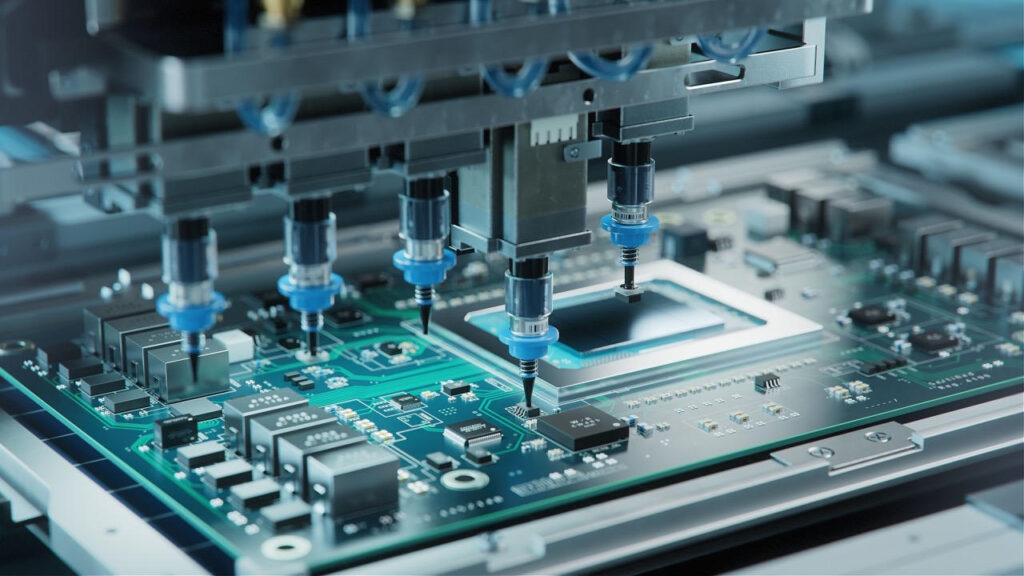FierceWireless: FreeWave Delivers Rugged IIoT to Mount Washington Observatory

Earlier today, FierceWireless published an article highlighting a recent joint case study from Mount Washington Observatory’s use of FreeWave’s FGR and FGR2 radios to collect vital climate data. Editor Monica Alleven pointed out several key factors that drive the success of the project: FreeWave says it’s known for its ability to maintain connectivity in environments where other technologies have succumbed to the elements. At Mount Washington, FreeWave’s FGR and FGR2 radios connect a network of 28 sensors and devices on five remote weather stations and deliver data in spite of the area’s year-round harsh weather. The weather stations are solar-powered and only receive sunlight 40% of the year, another reason that FreeWave’s low-power solutions are ideal for the network. According to Freewave, these capabilities have enabled 24-hour, year-round network connectivity. To read the full article, visit FierceWireless: http://www.fiercewireless.com/wireless/freewave-delivers-industrial-iot-at-mount-washington-observatory-n-h To read or download the Mount Washington Observatory case study, visit: https://www.freewave.com/mount-washington-observatory/ FreeWave also recently published a joint case study with the British Antarctic Survey, which uses similar ruggedized IIoT technology to aggregate and transmit data reliably in conditions that could arguably be called some of the most extreme on the planet. As with Mount Washington, FreeWave’s FGR and FGR2 radios are the backbone of the network deployment, as they have consistently proven to function in temperatures well below the approved -40 degrees Celsius. To read or download the British Antarctic Survey case study, visit: https://www.freewave.com/case-studies/british-antarctic-survey/
IIoT News Headlines: Trains, Agriculture, Underwater and More

Industries around the world are being transformed by the Industrial IoT. We recently shared a blog with a report that estimates IIoT will experience explosive growth and approach one trillion dollars by 2025. From trains and under water applications, to agriculture, we are already seeing IIoT expand its reach today. However, we continue to see security as one of the biggest challenges – which continues to top news headlines. Below are some of the recent IIoT stories that have caught our attention: How Siemens Is Using Big Data And IoT To Build The Internet Of Trains By: @BernardMarr | Published on: @Forbes “Siemens AG is one of the world’s largest providers of railway infrastructure, serving rail operators in over 60 countries. Through harnessing Big Data, sensors and predictive analytics they say they can now guarantee their customers close to 100% reliabilit It calls this the “Internet of Trains” – the on-rails segment of the wider ‘Internet of Things’ concept which describes how everyday objects of all shapes and sizes can now be connected together online and given the ability to communicate and capture data for analytic purposes.” Agriculture Is The No. 1 Opportunity For African Internet Of Things, Security The No. 1 Challenge By Tom Jackson | Published on: @AFKInsider “Agriculture, Africa’s largest economic sector, is likely to be central to the growth of IoT. There are many examples around the world where value can be unlocked from enhanced efficiencies along the value chain. Mining, oil and gas, telecommunications and manufacturing will have to adopt IoT to improve efficiencies.” The Internet of Underwater Things Published on: @NauticExpo_eMag “The development of an Internet of Underwater Things (IoUT), transmitting data throughout the ocean could make possible a system of roaming, autonomous vehicles and underwater sensors, all communicating with each other and relaying information to networks above the surface. This could be used for a wide range of submarine tasks, from pipeline repair and shipwreck surveys to seismic detection and ecological monitoring.” IIoT and The Cyberthreat: The Perfect Storm of Risk By: @ChrisGrove_Geek | Published on: @MBTwebsite “Many of these newfound risks did not previously exist, mostly due to the lack of interconnectivity and the network ‘air-gap’ — which has become a thing of the past. As industrial organizations race to keep up with advances in manufacturing technologies, IT is increasingly encroaching into the OT world. It’s no longer uncommon to find IT technologies like Ethernet, Wi-Fi, the Cloud and cybersecurity products like virus scanners, firewalls, Intrusion Detection/Prevention Systems and Security Information/Event Management (SIEM) products being managed outside the purview of IT.” It will be interesting to see how the IIoT continues to transform industries. What are some of the interesting use cases you are seeing as the IIoT growes? What are your biggest security concerns when it comes to IIoT?
British Antarctic Survey Leverages Ruggedized Data Transport

Antarctica inhabits a unique place in the human exploration mythos. The vast expanse of uninhabitable land twice the size of Australia has birthed legendary stories of human perseverance and cautionary tales about the indomitable force of nature. However, since those early years, Antarctica has become a rich research center for all different kinds of data collection – from climate change, to biology, to seismic and more. And although today there are many organizations with field stations running this data collection, the nature of its, well, nature still presents daily challenges that technology has had a hand in helping address. Can You Send Data Through Snow? British Antarctic Survey (BAS) – of recent Boaty McBoatface fame – has been collecting data from its field station network for more than 60 years. Over that time, BAS has become a global leader for polar science and polar operations, collecting data on sediments, ice cores, the polar atmosphere and the ever-changing ice shelves – all of which are vitally important for helping predict the climate of the future. To collect this data, BAS required a network that could reliably transmit it in what could be considered one of the harshest environments on the planet. This means deploying GPS equipment, motion and atmospheric sensors, radios and more that could stand up to the daily tests. In order to collect and transport the data in this harsh environment, BAS needed a ruggedized solution that could handle both the freezing temperatures (-58 degrees F in the winter), strong winds and snow accumulation. Additionally, the solution needed to be low power due to the region’s lack of power infrastructure. The Solution BAS found that FreeWave’s 900 MHz radios could handle this myriad of requirements. The organization deployed 19 radios across its network, each connected to a remote GPS station containing sensors that track the movement of the Brunt Ice Shelf near one of the primary research stations. The GPS sensors determine the Shelf’s position and dynamics before sending the data back to the station. There are several other specs that make the deployment of these radios operationally viable for British Antarctic Survey, but to find out more check out our case study with all the details: https://www.freewave.com/case-studies/british-antarctic-survey/!
Top News: Manufacturing the Fate of Our Digital World

Manufacturing is in the midst reinventing itself on the heels of the latest IoT innovations. The industrial automation paradigm, which some say also gave rise to the lean manufacturing management philosophy, continues to influence organizations that wish to find new ways to capitalize on business opportunities in the digital age. Through that lens we gathered the top articles from the week and found some interesting perspectives. Some reports started suggesting manufacturing is in a time of trouble, both in the U.S. and around the globe, namely in places like China. But upon further investigation, we also find exciting trends that are shaping the evolution of manufacturing. We hope you enjoy this week’s roundup, and be sure to comment on your top articles of the week below! Chinese manufacturing fall adds to evidence of sharp global downturn (The Guardian) As the world watches Chinese manufacturing slow, many believe this is evidence of a major global downturn. The Guardian reminds us all that, “In another sign that manufacturers are braced for a long period of chasing business from a diminishing number of customers, they continued to lower their prices in February.” American Manufacturing in Peril (U.S. News) Gone are the golden days of domestic manufacturing, analysts now believe American manufacturing is in serious trouble. Andrew Soergel with U.S. News suggests that part of the problem for manufacturing is that, “The job market has changed. The generation has changed. The skill requirements to work in factories have changed.” The Manufacturing Side of CPG’s Digital Disruption (Automation World) In this era of digital disruption, consumer buying behavior will impact manufacturing practices. According to Stephanie Neil with Automation World, she thinks manufacturing could benefit from, “The use of standardized, reusable software modules simplifies configuration of robotic movements and integration with machine control functions. This allows machine builders to focus on increasing machine performance, added functionality, and equipment energy efficiency.” Despite all this talk about downturn and disruption in the manufacturing industry, there are some positive trends we should mention as well. Top 10: Manufacturing Trends of 2015 (Manufacturing Global) IoT, nanotechnology, SMAC Stack and greater visibility were all key manufacturing trends last year. According to Manufacturing Global’s trends, “Additive manufacturing, or 3d printing, is big news in the manufacturing sector. The new technology has captured the imagination of the general public and manufacturing executives alike, however it has also proven to be a game-changer for the industry.” 3-D Printing Poised to Shake up US Manufacturing (New York Post) In the last year 3-D printing has shown up in the medicine cabinet, operating rooms and even New York Fashion week. U.S. Manufacturing is getting a serious shake up with the launch of more 3-D printers. Catherine Curan with New York Post states that, “The 3-D printing boom isn’t big enough to single-handedly revive local manufacturing, but it will help.”




